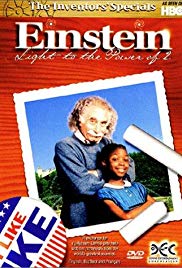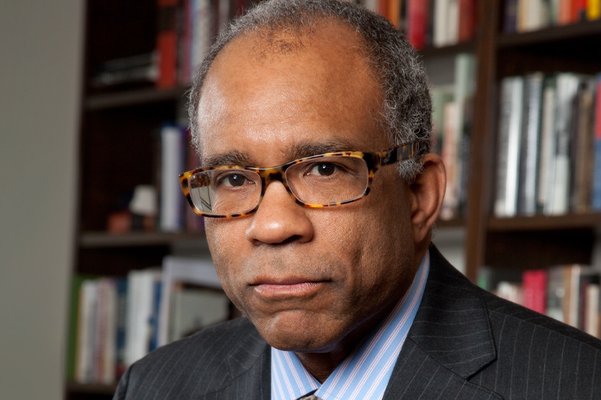Albert Einstein’s theories of relativity have contributed more than any other scientific discovery to the modern vision of physical reality. E = mc2 is well known throughout the world as one of the basic equations of science. (The speed of light is approximately 186,000 miles per second.) Einstein and Newton were the two scientists who did more than any others to shape our view of the physical universe.
Einstein was a slow starter, not learning to speak fluently until after the age of nine. He had trouble in school. When he graduated from the equivalent of college, intent on a career in teaching and research, no one would hire him. To a great extent, this was because he had alienated teachers who did not accept the latest discoveries in physics. Einstein was without a permanent job for two years after graduation. He finally secured a position as a low-level clerk in the Swiss patent office, not due to merit, but through a favor from a school friend whose family had political influence. Einstein’s genius was only recognized years later when, while still employed at the patent office, he published scientific papers that described the theory of relativity and changed the modern view of the world.
Einstein was always concerned with helping others and with politics. He took independent and sometimes controversial positions on political and social issues. There are a number of examples of this. In 1896, then only sixteen years old, Einstein became so disgusted with the Prussian militarism that had swept Germany that he renounced his German citizenship. He later became a Swiss citizen. Einstein returned to Germany when he was offered a prestigious post at the University of Berlin which would require little teaching and leave him free to conduct his scientific research. Einstein lived in Germany during WWI but, unlike most German scientists, he refused to help the German armed forces. His opposition to the war was not open but was well-known. He told friends in Switzerland that he wished for an Allied victory. To his German friends he would ask Socratic questions to disturb their complacency. Einstein was very critical of the mindset of the German people during the war, but his feelings ameliorated somewhat during the post-war inflation and starvation caused, in part, by the onerous peace imposed by the Allies. In 1933, Einstein saw the coming Nazi menace to Jewish scholars and left Germany forever.
Einstein considered himself a pacifist. He revered Mahatma Gandhi (see Learning Guide to “Gandhi”). As the Second World War began, Einstein saw that “organized power can be opposed only by organized power…. Much as I regret this, there is no other way.” In 1939, fearing that Germany would develop an atomic weapon and use it against the Allies, Einstein wrote to President Roosevelt alerting him to the possibility that a bomb harnessing the energy of the atom could be built. During the Second World War, Einstein consulted for the U.S. Navy Bureau of Ordnance, helping to design weapons.
Einstein was willing to risk public disapproval by standing up for the principles in which he believed and by supporting his friends when they were attacked. This is shown in the movie when he writes a statement in support of J. Robert Oppenheimer, the chief scientist at the Manhattan Project. In the early 1950s, Oppenheimer’s security clearance was being revoked because of his past associations with Communists. For more on Oppenheimer and the Manhattan Project, see Learning Guide to “Fat Man & Little Boy”.
Einstein was an active Zionist and supporter of the State of Israel, although he never lived there.
Another fascinating fact about Einstein’s life is that he continued working and contributing until 1950, when he was more than 70 years of age. At that time he published an attempt to find a single law describing the relationship between the various forces of the universe. His conclusions have not been accepted by the scientific community.
We don’t pretend to understand Einstein’s theories of relativity. However, a couple of phrases in the descriptions have caught our eye and might peak the interest of children. The Special Theory of Relativity (1905) shows that both time and motion are relative to the observer. This theory holds that mass and energy can be changed into one another and that their relationship is E = mc2. The General Theory of Relativity (1916) describes gravity not as a force, but as a property of space itself. Put another way, gravity is a curved field in the space-time continuum created by the presence of mass. This is the reason that the effect of gravity on objects far away is instantaneous.
A fascinating question relates to the differences between Newton’s method of computing gravitational pull and the method developed by Einstein in his General Theory of Relativity. Newton viewed gravity as a force, but could never account for its instantaneous effects on objects very far away from the source of the gravitational pull. Einstein solved this problem by realizing that gravity was not a force, but rather a property of space in the presence of an object. The amazing thing is that Newton’s equations, despite being based on an erroneous view of gravity as a force, were so close to being correct. Newton’s equations give correct results except when gravity is very strong and even then the errors are very small. The General Theory of Relativity was proved correct by small changes in the orbit of the planet Mercury which Newton’s equations could not explain and by minute changes in the path of starlight close to the Sun, observed during a solar eclipse.






